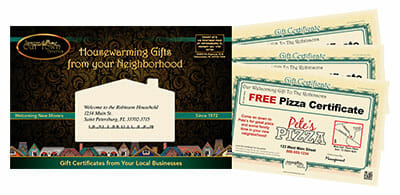A direct mail campaign is a promotion in which a business mails marketing letters, postcards, or other promotional material to existing or potential customers.
It is one of the oldest forms of direct marketing. According a 1921 business primer, "Effective Direct Advertising", the world’s first example of direct “mail” was a piece of papyrus distributed to residents of an Egyptian town around 1000 B.C. The papyrus contained a written plea from a landowner for the return of his runaway servant.
More than 3 millennia later, most local businesses rely on direct mail campaigns to market their products and services. Mailing a striking, attention-grabbing offer directly to homes and businesses is still a very attractive direct marketing option for local business owners.
Direct mail marketing has several benefits:
- Direct mail campaigns are relatively inexpensive, achieve results that are easily tracked, and can be designed to target nearly any group.
- Just starting a business? Direct mail can create awareness and interest in your new product or service.
- Already own a business? Mail marketing can generate new customers outside your traditional geographic area.
What Direct Mail Campaigns Accomplish
Regardless of what design one chooses for the mailing, direct mail campaigns should accomplish the five steps of a sale: attract attention, arouse interest, create desire, satisfy caution, and incite action. In other words, direct mail campaigns should lead to a sale or other desired result.
Experts break direct mail campaigns into several types, depending on the results a local business owner seeks.
Lead generation campaigns target the audience that would typically purchase the good or service a company offers. That includes people looking for pet services such as a new veterinarian, individuals likely to buy life insurance, homeowners with the income to hire landscapers, and other targeted population. The mailing invites prospects to request more information or a free consultation in exchange for providing personal information.
Then, there are direct selling campaigns, which seek out immediate sales. They list the product, its price, and include an order form or other pathway that lets a customer order and pay for the product or service. Direct selling campaigns can also bring customers through the business’ front doors.
Local/retail campaigns alert residents in the business owner’s geographic area. Auto repair shops, beauty parlors, carpet stores, car dealerships, car washes, restaurants – nearly any local business can benefit from these campaigns. Businesses target prospective customers by ZIP Code, municipality, carrier route or other geographic boundary, which also satisfies new customers who prefer to shop locally. New Mover Mail Marketing is a great example of how well local/retail campaigns work.
New Mover Mail Marketing campaigns target residents when they first move into a ZIP Code or other geographic boundary. Welcome Packages - which contain gift certificates from local businesses offering free items, discounts, and other specials to new residents – are a great way to connect new customers with local businesses.
Finally, to build expectation and brand recognition over time while generating leads, businesses can turn to multi-touch campaigns. These campaigns consist of postcards, self-mailers, letter packages, and other pieces mailed at arranged intervals. This is a good way to target high-value prospects.
Comprehensive New Mover Mail Marketing campaigns are also multi-touch campaigns as they include a second mailer.
Types of Direct Mail
Direct Mail, usually sent to individuals or businesses on mailing lists, can be mailed in bulk and can take several forms. Below are just a few forms of Direct Mail:
- Lead Letters: Lead letters, which are mailed in envelopes, are written to grab the attention of each prospective customer. When paired with inserts, the mailings hold a lot of information. Depending on the market, the envelope can be designed to appeal to professionals at other businesses or raise the interest of consumers.
- Postcards: Postcards can be designed to match the advertising pitch for most products and services. Potential customers can spot the ad message and eye-catching graphics as soon as they grab their mail.
- Self-mailers: Self-mailers hold more information than postcards. The single, bi-fold, or tri-fold pieces have ample space for color maps, diagrams, and other advertising graphics to raise a new customer’s interest.
- Community mailer: Community mailers include free offers or discounts to local businesses, and may include information about happenings within the community. An example of a successful community mailer is the Our Town America New Mover Welcome Packages, which are mailed to new residents upon move-in to their new home.
Direct Mail Campaigns Still Work
A survey of Millennials shows that direct mail campaigns do very much still work.
According to a 2016 Gallup survey, 36 percent of 20-somethings look forward to checking the mail each day. Not only that, another survey found that 23 percent of Millennials say they bought or ordered something as a result of receiving direct mail in the last 12 months. Finally, surveys show that Millennials who live with parents are 18 percent more likely to read direct mail and 32 percent more likely to find it memorable.
Though direct mail marketing has changed since the Egyptian land owner distributed his papyrus message, local businesses still find it an effective marketing tool. Direct mail campaigns result in new customers when the right message gets to the right recipient.
John is a guest blogger for Our Town America and previously worked in national sales at our Clearwater, FL corporate headquarters.



